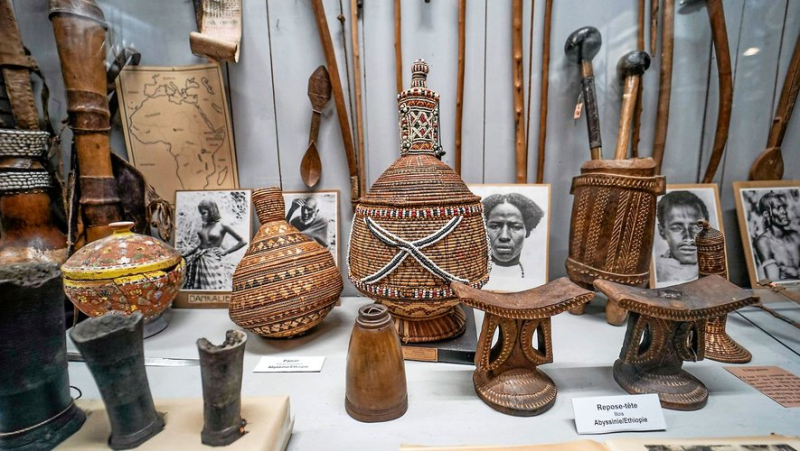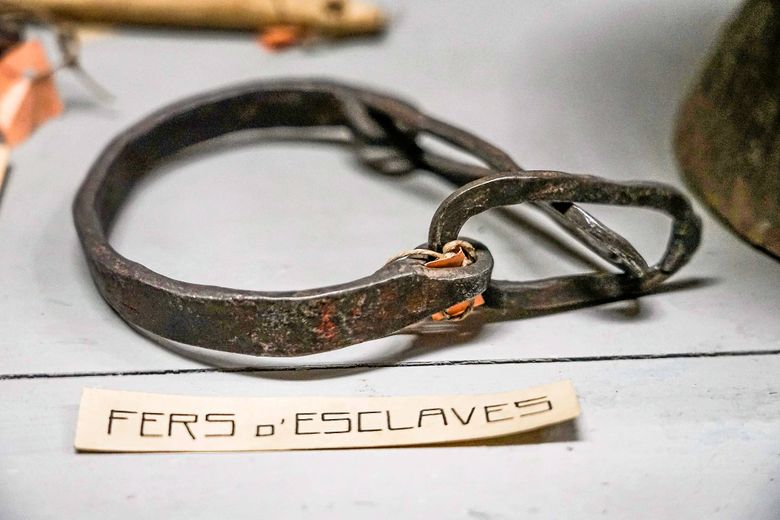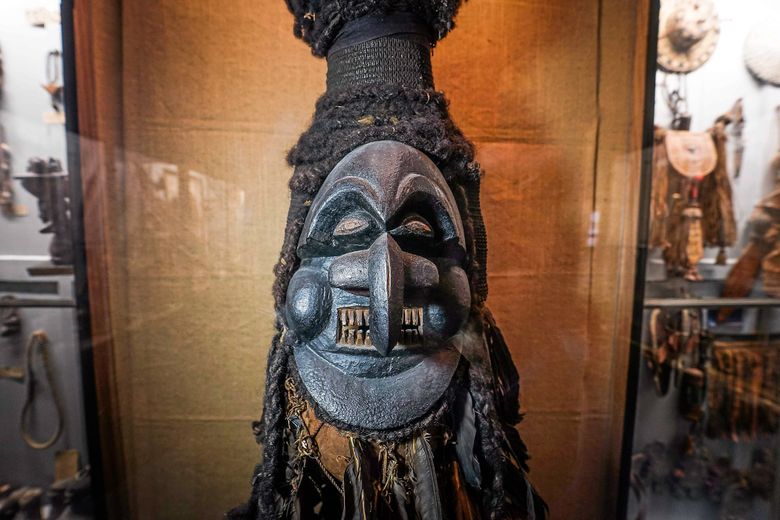Journey through time and memory in the ethnography room of the Natural History Museum of Nîmes

Un accrochage foisonnant, pratiquement intouché depuis les années 1930. – MIKAËL ANISSET
Le muséum d'histoire naturelle de Nîmes possède une collection d'environ 2 000 objets africains et océaniens.
The ethnography room of the Nîmes natural history museum offers a double journey through time, with its old windows virtually untouched since its opening to the public in the 1930s. Masks, weapons, tools, musical instruments and sacred objects evoke curiosity about the vast world at the beginning of the last century, when the planet was crossed by steamboat. The presentation also allows you to rediscover the museums of the period, exhibiting objects collected in the French colonies.
Slave irons
Few comparable rooms have survived. "It's a place of memory", explains Adeline Tardieu-Rouilly, curator of the museum who wanted to create in parallel an exhibition on slavery. "We are one of the only museums to preserve slave irons, which we regularly loan out. “It’s a duty,” she continues. Alongside these moving testimonies, including a frightening metal set allowing the neck and limbs to be held together or a slave traders' whip, panels look back on the history of triangular trade and fields of cotton in America.

The Nîmes museum is one of the only museums to have slave irons. Midi Libre – MiKAEL ANISSET
The museum preserves around 2,000 objects from Africa or Oceania. Asian collections are kept in reserve. A few pieces were deposited from the start by the Trocadéro museum, ancestor of the Musée de l'Homme created in 1878 for the Universal Exhibition. objects were collected by people from Nîmes who worked overseas. They gave them to the museum for the common good and education, says the curator. At the time, productions intended for tourists were rare and the objects bear witness to daily life in the 19th and early 20th centuries. Since the 1960s, these collections "have taken on a market value" who regularly panics the hammers of the auction rooms and donations are rare…
More than 2,000 objects from Africa, Oceania and Asia
Because several pieces kept in Nîmes are exceptional. Unlike contemporary spaces like the Quai Branly which celebrate aesthetics, old museums preferred accumulation and abundance. Small labels, almost a century old and written by hand, guide the eye in this impressive collection that Adeline Tardieu-Rouilly discovered with the impression of diving into Tintin and 'L'' Broken ear".

A Caledonian mourner's mask. Midi Libre – MiKAEL ANISSET
The museum notably exhibits a very rare apouema mourner's mask from New Caledonia, of which there are around fifteen examples left in the world. "It was produced after a year of mourning, the men let their hair grow and cut it to form the headdress", recalls the curator. The mask was then cut, the shape of the nose indicating its origin, then the beard was made of feathers. Among the precious objects is also an entertainment mask from the Malekula Islands in New Guinea, which was only produced for a gathering of ethnic groups which took place every 50 years. Made up in particular of tree fern, the Nîmes example is more than 150 years old.
Gardois around the world
The objects also tell the story of the Nîmes explorers. Thus the museum houses objects collected by Edouard Jaulmes, originally from Vaunage and first teacher in Raiatea in Polynesia and whose little diary that he sent to his family made it possible to document the collection. Two hut posts from New Caledonia were brought back to Nîmes by Pastor Nissolle, who was sad to see them burning according to local tradition. The next day, the Kanaks had placed them on either side of his door. On the death of her son, a soldier in Africa, the Countess of Bernis gave the museum numerous objects from Dahomey, present-day Benin.
The collections also tell the story of the Western, religious and colonial conquest. Thus, a Byeri reliquary from Gabon, covered with a skull, was intended to collect the ashes of ancestors to protect the community. When the village became Christianized, it separated itself from the sacred object.

Adeline Tardieu-Rouilly, curator of the Nîmes museum.
"All this shows that we all have the same needs. There is only one human species, we are all the same, explains the curator who carefully watches over these collections. Often made of wood, textile or leather, they are fragile… The oldest remember the smell of creosote, an insecticide tar, which perfumed the room for decades. Today, the team ensures conservation using less toxic means. And the thick walls of the former Jesuit college, well ventilated, allow temperatures to vary naturally and gently, making it possible to discover these collections without air conditioning. Like in old museums…
Tuesday to Sunday, 10 a.m. to 6 p.m. Natural history museum, boulevard Amiral-Courbet, Nîmes. 5 €, 3 €. 04 66 76 73 45. I subscribe to read more




